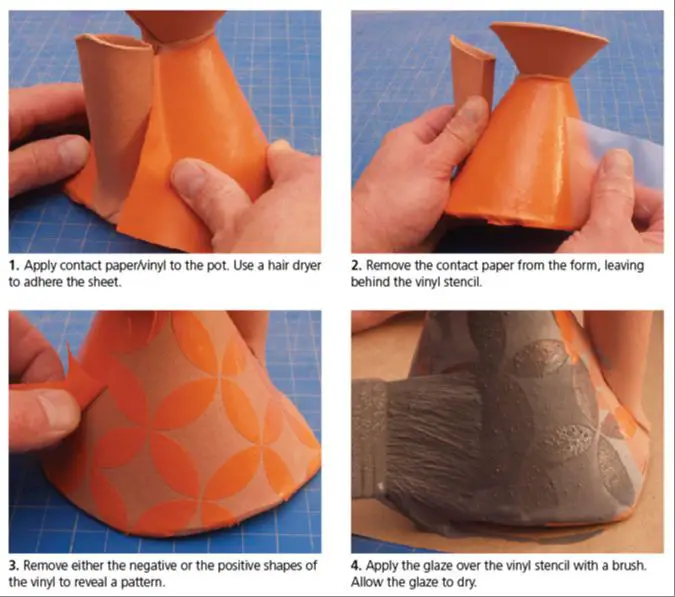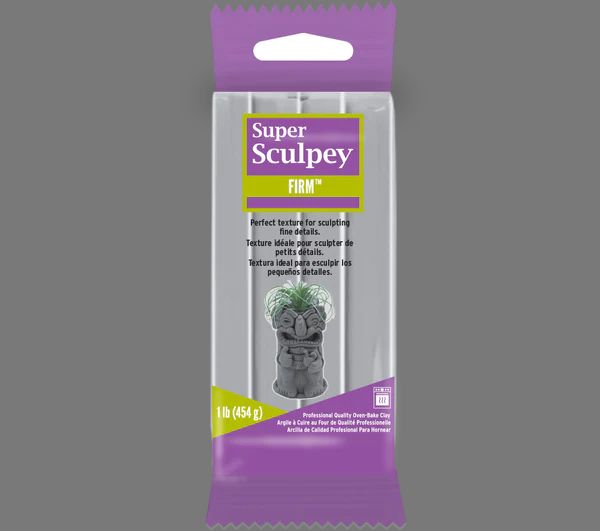Decorating Techniques For Functional Clay Pottery
Functional pottery refers to pottery that is designed to be useful and serve a practical purpose, rather than just decorative (Robertson, 2022). Pottery vessels have been used functionally for thousands of years, with evidence of clay pots used for cooking, storage, and transport dating back to ancient Mesopotamia, China, Greece, and Rome (Encyclopedia Britannica, 2022). The earliest known functional pottery vessels were simple hand-built containers made from clay that was readily available locally. As techniques advanced, wheel-throwing enabled the creation of more uniform and refined functional wares. Throughout history, pottery has remained essential for tasks like storing and serving food and water.
While many functional pots historically had minimal decoration, craft potters today often aim to make functional pieces that are both beautiful and practical. The harmony of form and function makes handmade functional pottery unique and highly appealing.
Sources:
Encyclopedia Britannica. (2022). Pottery. Encyclopedia Britannica.
Robertson, N. (2022). Useful Pottery [PDF File]. Graham Marks Ceramics.
Purpose of Decorating Functional Pottery
One of the main reasons to decorate functional pottery is to enhance its beauty and visual appeal (Source). Although functional pieces like mugs, bowls, and vases serve a practical purpose, decorations transform them into works of art. Decorative techniques add color, texture, and design that highlight the form and make the pottery more visually interesting.
Decorating functional wares allows artists to showcase their creativity and skill. While the pottery needs to maintain its utility, decorative elements can also imbue pieces with artistic flair. A handcrafted mug gains character from carved patterns, ceramic decals, or colorful glazes. Decorations make functional pottery special and unique.
Planning the Design
When planning the design for functional pottery, it’s important to think carefully about the form and intended function of the piece. As Naomi Clement states, “In this virtual workshop lecture, Naomi will discuss in detail the various considerations that go into designing thoughtful pots that function beautifully.” (Source). The form, size, weight, balance, handles, spouts, lids, etc. should all align with the intended use of the pottery. For example, a teapot needs a spout for pouring, a lid to contain the liquid, a handle for grasping, and a balanced base so it doesn’t tip over easily. As noted on the Fine Arts Department website, “Function- any ceramics piece that is not purely decorative and has an intended use. Ergonomic- Design intended to provide optimum comfort and to avoid stress…” (Source). Considering ergonomics and how the pottery will be handled during use is an important part of the design process.
Additionally, the opening of a vase must be wide enough to accommodate flower stems, while a mug should feel comfortable to drink from. The texture, weight and thickness of the clay body can also impact functionality. Planning the design with careful consideration of form and function will result in beautiful, useful pottery.
Color and Pattern
One of the most popular ways to decorate functional pottery is by adding color and patterns. Using colored slips and underglazes are great options for bright, vibrant designs. Slips are fluid clay made from the same ingredients as clay but with a higher proportion of flux. They can be painted onto leather-hard clay and will become integrated into the surface after firing.
Underglazes are also painted on leather-hard clay but are more like a colored glaze. Underglazes are porous, so they allow the clear glaze painted over them to fuse to the clay body during firing. This provides a layer of color underneath the protective glaze coating. Underglazes come in many bright colors and can be used to hand paint details (Source 1), create patterns through techniques like mishima or inlay, or coat large areas of the pottery surface. Using different colored slips and underglazes allow for lots of creativity in surface designs.
Glazes themselves also come in many colors, and the glaze can be selectively applied to create patterns. Glazes pool and melt during firing, so they have a characteristic glossy look and feel. Using combinations of colored slips, underglazes, and selectively applied glazes allows for unlimited possibilities in colorful surface decoration of functional pottery (Source 2).
Textured Surfaces
One of the most common ways to add visual interest to functional pottery is by incorporating textured surfaces into the design. Textures add tactile appeal and can make pottery feel more organic and natural. According to the article “Designing With Texture: Using Textured Plaster Slabs to Incorporate Surface Detail into Pottery in the Design Stage” on the Ceramic Arts Network website, textured plaster slabs can be pressed into soft clay before construction to imprint patterns and textures directly into the surface (https://ceramicartsnetwork.org/daily/article/Designing-With-Texture-Using-Textured-Plaster-Slabs-to-Incorporate-Surface-Detail-into-Pottery-in-the-Design-Stage).
There are many tools that can be used to add texture as well, including various ribs, rollers, and texture mats. Stiff bristle brushes can create scratch textures by brushing across leather-hard clay. Sponges, crumpled plastic, and burlap can also imprint interesting patterns. The texture itself becomes a focal point of interest, as noted in the Ceramic Arts Network article “Texture with Attitude,” shifting emphasis away from form (https://ceramicartsnetwork.org/pottery-making-illustrated/pottery-making-illustrated-article/Texture-with-Attitude).
Carving and Incising
Incising is a technique used to create decorative patterns and designs on pottery. It involves carving lines and patterns into the surface of leather-hard clay using metal ribs, loops, or various tools with sharp points. Incising allows potters to make detailed designs in the clay that remain visible after glazing and firing.
Incising tools can range from professional pottery ribs to household items like knitting needles, pencils, or skewers. The lines can be straight or curved, thin or wide, shallow or deep. Incising offers more flexibility and control than stamping or carving, as lines can be drawn freely by hand. Potters often incise geometric patterns, representational images, text, or tribal-like motifs.
When incising, it’s best to work on leather-hard clay before bisque firing. The clay needs to be soft enough to carve lines into, but firm enough to hold the shape without deforming. Maintaining consistent depth and angle when incising gives the design a polished, professional look. Deeper lines will create more contrast. To enhance visibility, carved areas can be colored with underglazes or filled with colored slips before glazing. When fired, the glaze will accentuate the incised texture. Multiple layers of glaze can also be used to make the carved design stand out more vividly.
With practice and imagination, incising allows limitless ways to personalize functional pottery or add artistic flair. The carved texture gives interest and tactile appeal to mugs, bowls, vases, and jars. It’s an age-old yet timeless decorating technique for clay.
Applying Decals

One of the easiest ways to add decorative elements to functional pottery is by applying decals. Decals are pre-made designs printed on paper or plastic sheets that can be transferred onto bisqueware or greenware. Here are some tips for working with decals:
Choose the right decals for your project – Decals come in all sorts of designs from simple patterns to complex artwork. Consider the color palette and motif. Make sure the decal is rated for the type of clay body you are using.
Prepare the surface – Bisqueware should be free of any dust, oils or residue. Lightly sand any rough areas. Greenware will need 2-3 coats of decal sealer applied prior to decal application.
Cut out the decal – Use scissors or a sharp craft blade to carefully cut out the decal design. Avoid touching the decal surface.
Soak the decal – Place the cut out decal in room temperature water for 20-30 seconds until it slides easily off the backing paper.
Apply decal to surface – Slide the decal off the paper backing onto the pottery surface. Use a soft brush or sponge to apply gentle pressure and smooth out any air bubbles or wrinkles.
Allow to dry – Let the decal sit undisturbed until completely dry. Bisqueware may need 10-15 minutes, while greenware will take 1-2 hours.
Clean edges – Carefully trim any decal edges using a sharp craft blade. Remove any tiny air bubbles with a pin.
Seal and finish – Apply 1-2 thin coats of decal sealer to protect the decal. Once fired, additional glazes or finishes can be applied over the top.
Glazes
Glazes are an important part of decorating and finishing functional pottery. They serve both decorative and practical purposes by adding color, effects, and making the pottery non-porous and watertight. There are several types of glazes to choose from when decorating functional wares.
Clear glazes provide a transparent, glossy finish while allowing the natural clay color to show through. They are often used on red and terra cotta clays to enhance the rich earth tones. Colored glazes come in a wide palette of colors from bold primaries to pastels. Mixing colored glazes allows for custom blends. Luster glazes have a metallic sheen, like gold, silver, or copper. Adding luster glaze accents creates an elegant look. Crackle glazes intentionally form a cracked pattern on the surface during firing. The clay body color shows through the cracks for added visual interest. Using multiple layers and types of glazes together can produce beautiful special effects. For example, applying a crackle glaze over a colored glaze allows the color to peek through the cracks.
When selecting glazes for functional pottery, it’s important to choose those intended for items coming in contact with food and beverages. Food-safe glazes do not contain lead, cadmium, or other toxic materials. It’s also best to use glazes with similar firing temperatures and properties to avoid undesirable interactions. With the right selection and combination of glazes, both form and function of clay pottery can be beautifully enhanced.
Firing
The final step in decorating functional pottery is the firing process to permanently set the glazes and finishes. Firing transforms raw clay into a hardened, vitrified material through exposure to high temperatures in the kiln. Vitrification occurs when the silica and other minerals in clay melt, filling the pores and creating a non-porous, glassy surface.
For functional ware like cups, plates, and vases, it’s important to reach adequate temperatures of over 2,200°F to fully mature the clay and glazes. This ensures the pottery is durable, chip-resistant, and safe for daily use with food and beverages. Specific firing schedules will depend on the type of clay body and glazes used. Ramping up the temperature slowly and soaking at peak heat allows even heat distribution.
With decorative techniques like carved surfaces, glazes will melt and fuse into the impressions during firing. The colors and textures come to full vibrancy. By following the complete firing schedule, the finishes become permanent features of the functional pottery.
Conclusion
Decorating functional pottery requires balancing aesthetic appeal and practical use. When planning designs, consider the vessel’s purpose and how decoration can enhance, rather than hinder, its utility. While decorative techniques like carving, incising, and applying decals can add visual interest, glazes often have the biggest impact on both appearance and function. Choose colors and surfaces judiciously, keeping in mind how the pottery will be used. Firing brings everything together, so follow kiln instructions closely to achieve desired results. In the end, well-executed decoration elevates humble functional ware into beautiful, everyday art.
With some planning and practice, ceramic artists can create functional pottery that is both durable and stunning. Keeping the end-user and intended purpose in mind allows creativity to flourish within practical boundaries. Decorative techniques add artistic flair, but should not undermine utility. A marriage of form and function makes for pottery that succeeds on every level. The right balance of beauty and purpose produces tableware, cookware and serving vessels that owners will treasure for years to come.

